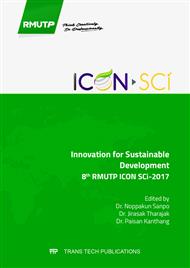p.227
p.234
p.241
p.248
p.254
p.260
p.269
p.276
p.284
The Design of Medium Size Voltage Capacitor in order to Improve the Power Factor
Abstract:
This article presents theory of The design of medium sized voltage capacitor in order to improve the Power Factor Value to AC motor. In present, the electrical power system has focus on improving the Power Factor significantly because it is the major key to increase or decrease the applicable expenses. The power system that has low power factor will have a lot of loss to system, especially when electrical voltage is on voltage medium. When power factor has been adjusted, the system can take more loads and electrical power loss is decreased. It also decreases voltage in power line and decreases electrical bills at the same time. This article presents the theory to analyze data from motor that needs to adjust a power factor so that it pass electricity authority standard by considering the efficiency of the motor so that the consumers do not have to pay the penalty of the Power Factor Value differences to the Electricity Authority. Furthermore, it can help decrease the bills of unstandardized electrical power which occurred in the system and enable the system to take more loads at the same time.
Info:
Periodical:
Pages:
254-259
Citation:
Online since:
March 2018
Keywords:
Price:
Сopyright:
© 2018 Trans Tech Publications Ltd. All Rights Reserved
Share:
Citation:


